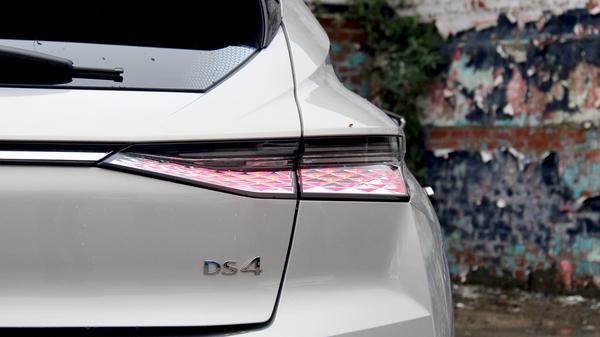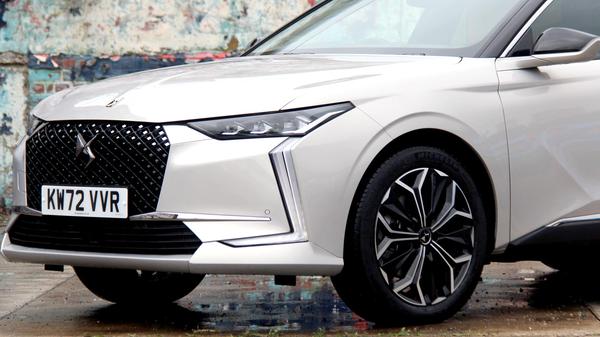Long Term Review
Living with a… DS Automobiles DS 4 E-Tense hybrid (Final report)
Citroën’s premium offshoot DS Automobiles has seemingly hit its stride with stylish models like this DS 4 – here’s what it’s like to live with

Words by: Dan Trent
Published on 12 October 2023 | 0 min read
Premium spin-offs from mainstream brands are nothing new, though some have been more successful than others. Toyota pulled it off with Lexus, Nissan’s similar ploy with Infiniti rather less successful (at least in the UK) while the jury is still out on Genesis and its ‘posh Hyundai’ schtick. Citroën’s own premium sub-brand DS Automobiles started out with jazzed up versions of the C3 supermini but has now really spread its wings, pushing the French identity with allusions to Parisian haute couture fashion and a defiantly gallic twist on luxury. And this DS 4 plays an important part in that, building on foundations shared with the Vauxhall Astra and Peugeot 308 but with an eye-catching and very distinctive blend of SUV stance, coupe sleekness and hatchback practicality. It’s quite a bit more expensive, but brings with it a lot more tech and a very real sense of luxury. Is it enough to establish the DS Automotive brand as a premium player in its own right? We’ve got six months with the hybrid version of the DS 4 to find out.
Skip to: Month 1 – A DS-what? Month 2 – What’s the point of plugging in? Month 3 – But what about the rest of it? Month 4 – Can I electrify my DS4 experience? Month 5 – Life electrified, life improved? Month 6 – Au revoir!
Skip to: Month 1 – A DS-what? Month 2 – What’s the point of plugging in? Month 3 – But what about the rest of it? Month 4 – Can I electrify my DS4 experience? Month 5 – Life electrified, life improved? Month 6 – Au revoir!

What is it?
- Model: DS Automobiles DS 4
- Version: 225 E-Tense Hybrid
- Spec level: Rivoli
- Options fitted: TBC
- Price as tested: TBC
We like
- Distinctive looks
- Promised economy
- Premium vibe
We don’t like
- Fiddly infotainment interface
- Not having the fanciest spec
- Nobody knows what it is
Month 1 – DS-what?
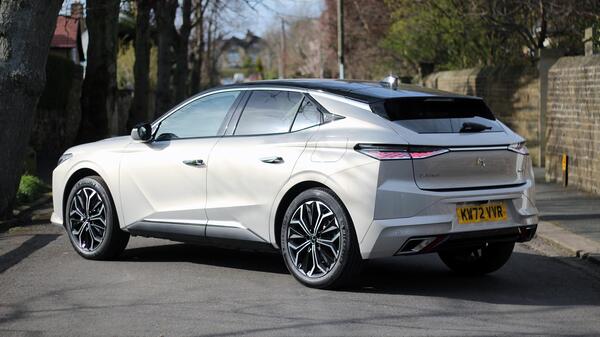
Mileage: 734
Fuel consumption: No figures yet recorded
Straight off the bat the DS 4 looks exotic and very eye catching among the ranks of dowdier SUVs and crossovers that throng the road outside my house each day at school time. But will anyone clock the DS badge, or even know what it represents? Given the DS 4 has been on sale now for a while now and I don’t think I’ve seen a single one it will be interesting to find out. And whether good looks are enough to convince people French brands cut it as a premium choice.
My DS 4 E-Tense Rivoli is certainly dressed to impress, the sleek lines and sheen-like quality of its Pearl Crystal paint nicely accentuated by the big-wheeled stance, low roofline, slashes of chrome trim and jewel-like detailing of the head- and tail lights. In the metal it looks a lot longer, wider and sleeker than the pictures suggest, and way more glamorous than the Peugeot 308 and Vauxhall Astra with which it shares its foundations. Which is good, because like-for-like it’s considerably more expensive than both.
Though you can have the DS 4 with a regular petrol or diesel engine mine is the top of the range E-Tense plug-in hybrid, which, as Rory discusses in his video at the top of the page, brings with it some pretty bold, triple-digit fuel efficiency claims. But, like all plug-ins, only if you use it correctly. Given I’m lucky enough to have a charging point on my house this long-term loan is an excellent opportunity to test the theory, though previous experience suggests it may be a hiding to nothing. Happy to be proven wrong, and Erin is a firm advocate of the same tech in the Astra hybrid she’s been running.
Looking at the spec of my Rivoli model it has some of the good stuff like the fancy LED headlights, complete with swivelling beams that ‘look round’ corners in a system inspired by a signature feature of the classic Citroën DS whose name this car carries. Mine also gets leather, which looks and feels nice but isn’t as fancy as that on the higher-grade models. Nor do I get the self-adjusting suspension or fancy Focal stereo. All of which sounds like some very entitled moaning on my part but, clearly, if you want the full luxury experience on your DS you need to put your hand a little deeper in your pocket.
I’m also interested to see if I get on any better with the mouse-pad style interface with the infotainment that sits in the centre console. Rory didn’t like it but actually living with the car is a good chance to see if you get used to it. Or it remains as annoying as it is on first encounter.
Time will tell. Time to start putting some miles in.
Back to top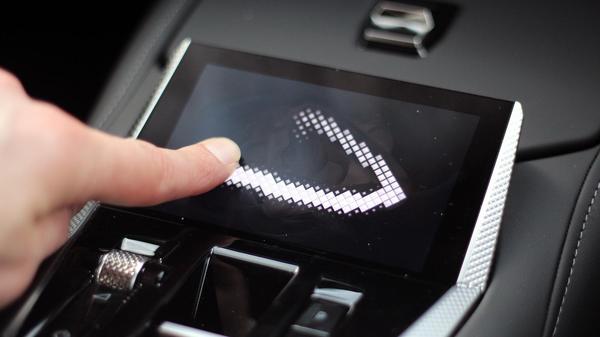
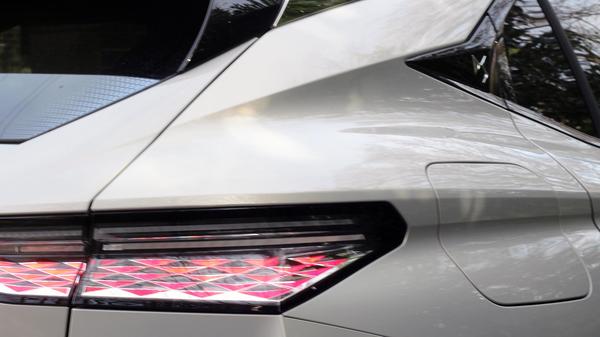
Month 2 – What’s the point in plugging in?
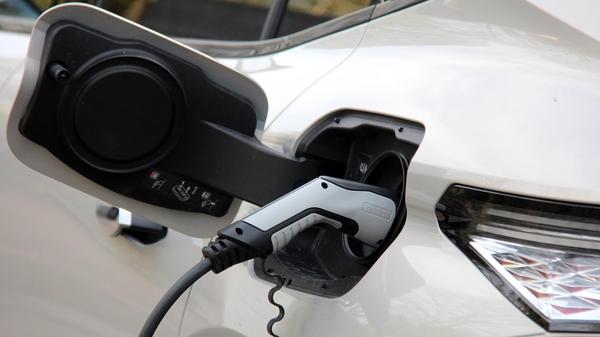
Mileage: 1,840
Fuel consumption: 48.1mpg (measured average)
I probably shouldn’t admit this but, fresh out of running an electric long-termer, I’m rather enjoying not needing to plug the DS 4 in, or plan my every extended journey around charging stops as I did with the Cupra. This rather fits with my lazy assumption many plug-in hybrids (or PHEVs in the jargon) rarely get plugged in by owners, on the basis monthly Benefit In Kind savings for company drivers are the real reason most people choose them.
Sure, if your PHEV lives on a driveway and your wallbox is within easy reach it’s probably less of a faff. But mine’s round the back of the house, I’d have to juggle cars to make it fit (or block the neighbours in) and it takes a real conscious effort. But with my mpg in the mid to low 40s from running it on the internal combustion engine alone I needed to follow Erin’s pro-PHEV example and see if plugging in could realise anything close to the claimed triple-digit mpg figures. And, no, I don’t know why we still measure fuel efficiency in miles per gallon when we buy our petrol and diesel in litres but I guess it’s so deeply ingrained we’re stuck with it.
With a battery full of kWh and a tank full of petrol is the DS 4 now getting close to those triple-digit claims? No. To score that you’d have to keep your round trips to little more than the 20 miles of pure electric range between charges, which might be viable for the school run or a short commute. But my journeys tend to be longer than that, and once the battery is drained you’re back on the petrol engine. Over a couple of hundred miles that can even out to mid-60s mpg, but much further than that and it’s back down to the 40s, or about what you’d get from a non-hybrid car of equivalent performance. Because of the space taken up by the battery the hybrid DS 4 has a smaller tank as well, meaning my operating radius is just short of my regular 400-plus mile round trips to Heathrow. Which is annoying.
Does a mix of electric and petrol fuelling save money, though? It costs about four quid to charge the battery at my current domestic energy tariff, which gets me 20 of those 400-odd miles. The two litres of petrol it would need to cover the same on just the combustion engine? Less than three quid at current prices. Sorting out my domestic energy and getting a cheaper off-peak rate could slash that charging cost but it’s a lot of faff for pretty marginal savings. Especially for a private buyer, given the PHEV’s bottom-line price is more than £8,000 over a non-hybrid Puretech petrol in the same Rivoli trim. You’re unlikely to ever claw that back no matter how many electric miles you do, and while the hybrid has quite a bit more power it also weighs a lot more than the petrol so any performance gains are likely pretty marginal as well. The bigger fuel tank of the petrol should realise a 500-plus mile range between fills as well, which is obviously better for those who do a lot of longer journeys.
But for company car drivers those Benefit In Kind numbers will probably remain the deciding factor, given it’ll cost you £100 per month less in tax than running the pure petrol one whether you ever actually plug it in or not. Hard to argue with the economic case if that’s you, though I remain to be convinced plug-ins actually offer much functional benefit over a simpler, lighter and probably more efficient non-hybrid. But I like a challenge and my goal for the remaining time with the car is to prove myself wrong. Wish me luck!
Back to top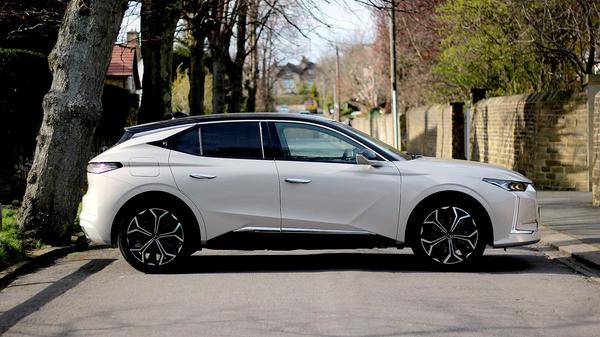
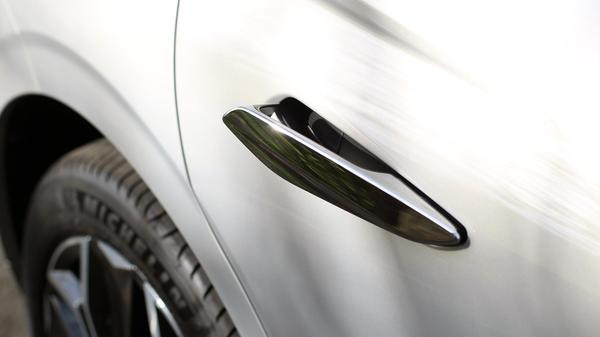
Month 3 – But what about the rest of it?
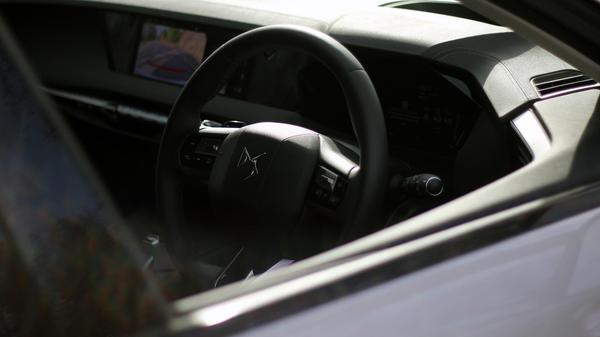
Mileage: 2,424
Fuel consumption: 47.2mpg (measured)
You’d be forgiven for thinking otherwise given it’s all I’ve been banging on about so far but there is in fact more to this DS 4 than the fact it’s a plug-in hybrid! So, let me tell you a little about the rest of it.
As I said at the start, the DS 4 is meant to feel posher than the Peugeot 308 and Vauxhall Astra it shares its foundations with and I’d say mission accomplished there. It’s also a good-looking and distinctive car, which has just enough crossover stance to please those who like that sort of thing while being sleek enough to pass muster for those who don’t. For avoidance of doubt I put myself in the latter category!
The positive impressions continue inside which, even after three months of family pummelling, still has a pleasingly premium waft of leather. Dig a little deeper and there are some flimsier materials but the overall vibe is good. Even though I don’t have the fancy suspension that reads the road ahead and adjusts accordingly the influence of DS parent brand Citroën is clear in how comfortably it rides, and how refined it is on a run. Both are welcome on those long, late-night hauls back up the M1 from Heathrow that make up many of my hours in the car.
If you’ve watched Rory’s video review of the car (see the top of the page) you’ll have seen his confusion over the strange, secondary touch screen on the centre console – this acts like the touchpad on a laptop and is meant to give you ‘hot key’ access to commonly used functions. I mainly use it to bring up the driver assistance settings to switch off the predictably irritating lane-keeping, which even more annoyingly then requires a secondary stab at the main screen to confirm the choice, an action that requires you take your eyes off the road and … often ends up with you swerving and needing the very system you’re trying to switch off in a weird kind of self-fulfilling prophecy. Once it’s off it’s off, though. Until the next time you switch the car on…
Generally, then, life is good with the DS and I admire its determination to do things a little differently. One observation from a recent run where I was sat in the back, though. The rear seat squabs are really quite short under the leg for adults. The flipside of this is the kids are actually more comfortable, because their legs hang down rather than being forced straight. Given how rarely I ride in the back not so much of an issue for me, then, but if your kids have reached the gangly teenage stage there might be more spacious options for family duties.
Back to top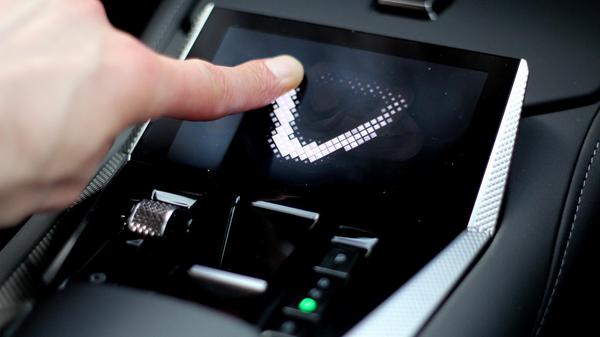
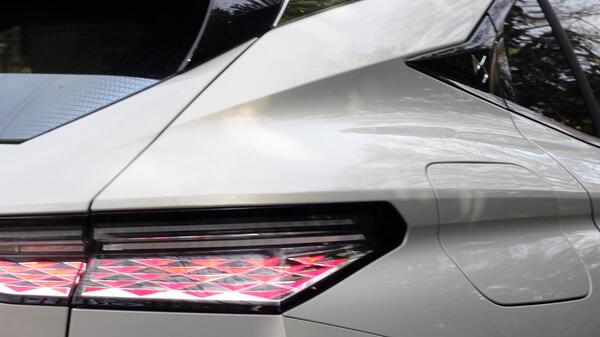
Month 4 - Can I electrify my DS4 experience?

Mileage: 3,188
Fuel consumption: 50.7mpg (measured)
“Ooh, I like your car, very smart!” A nice compliment to be getting when departing the car park of a posh hotel, but one with additional weight given the person offering it happened to work for Bentley and we were surrounded by a selection of Continental GTs brought along to celebrate the model’s 20th birthday. Best will in the world I’m doubting I’d have got the same response if I’d been in the Peugeot 308 or Vauxhall Astra that share the same fundamental bits under the skin as this car, so I’m scoring that as a win for DS and its premium ambitions.
Speaking of the Astra, I’m fresh from driving its new all-electric version, which gave me some food for thought given my ongoing scepticism about the value of the DS4’s plug-in hybrid system. Beyond being a useful tax saving for company drivers, that is.
I am doing my best, and to see if I can actually get anywhere close to the incredible official mpg figures – DS claims a best-case figure of 232mpg – I’ve been forgetting trying to make the financial case for plugging in at home and just seeing if it reduces fuel use. Headline news? My average has now climbed from high 40s to just a fraction over 50mpg, my best run on a mix of petrol and a fully charged battery a not especially staggering 56mpg. Fair to say, my usage case of long, motorway journeys does not favour a plug-in hybrid. But even when used for short-distance errands I’m not getting anywhere near those triple-digit claims.
The Astra, meanwhile, genuinely impressed me with the efficiency of its battery and motor combination, to the point where I actually did better than the official stats. Given my previous comments on the hybrid’s disappointing range (less than 400 miles, even with a full tank and fully charged battery) I can’t help but think a fully electric version of the DS 4 is a no brainer given the Astra proves the motor and batteries fit the platform.
I was about to suggest the DS team invite their Vauxhall colleagues for a night on the town in Paris to try and sway them into sharing the battery tech. But they may well have already done so, because a quick search reveals that, as part of DS’s commitment to have a fully electric version of each of its models in place by 2024, a battery powered DS 4 is due next year.
Can’t come soon enough, in my book. Given DS is meant to be the most premium of the cars based on this shared platform the increased cost should sit more easily than it does on the Astra, whose entry price has raised more than a few ‘what, for a Vauxhall?’ questions. No such problem for DS, and the combination of silent electric drive with the already refined and relaxing manners of this car would be spot on. So, hold the hybrid. I want my DS 4 fully electrified!
Back to top
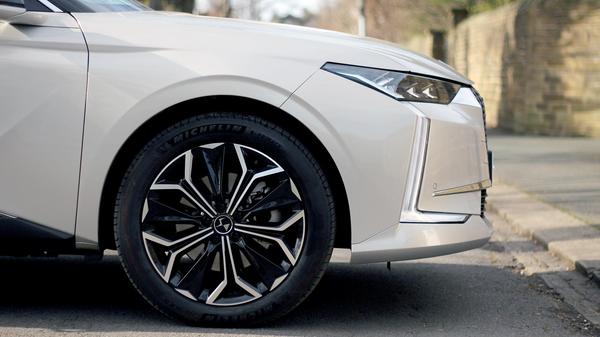

Month 5 – Life electrified, life improved?
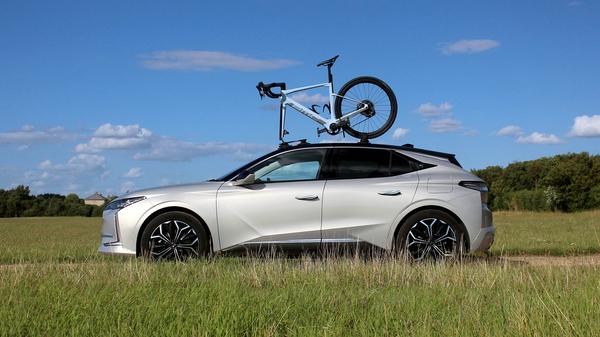
Mileage: 4,658
Fuel consumption: 47.7mpg (measured)
Just as cars like the DS4 are gaining batteries and electric motors for improved efficiency and performance so too are bicycles. These e-bikes are a big thing, big enough you can now buy one through Autotrader, as it happens!
As part of this initiative, I’ve been testing a few e-bikes for reviews on the new landing page, the two coming together when I had to transport £9,000 worth of fancy BMC electric gravel bike back down to London to return it after testing it. Using nothing more secure than suction pads. Sounds scary but I’ve used this Sea Sucker bike rack on a variety of cars now and once you get your head round it the system seems pretty secure, and means you can mount a bike on pretty much any vehicle without the need for straps, tow-bars or a roof rack. And, poser that I am, there’s something rather cool about combining a fancy bike on an equally smart car, the BMC and DS4 making for a very attractive pairing.
It's funny as well, because the scepticism you’ll have heard me express about the hybrid system on this car is similar to that I feel for electric bikes. The BMC works brilliantly, and the motor makes the steep hills round my way less of a sweat. A win-win in theory but, just as on a hybrid car, there are compromises when combining two power sources. Generally speaking leg power and the electric boost complement each other pretty well, but the law dictates the assistance has to cut out above 15.5mph, so if you want to go any faster (and on a bike like this you very much do) it’s actually harder work than a non-electric equivalent.
Sorry to sound like a stuck record but, on two wheels and four, while I can see the attractions of part-electric power I’m also yet to be totally convinced. And if I were to be spending that much on a fancy BMC road bike I think I’d enjoy one of the much lighter regular ones instead, just as (for the same reason) I have sneaking suspicion the purely petrol powered DS4 is probably the nicer car to drive.
Back to top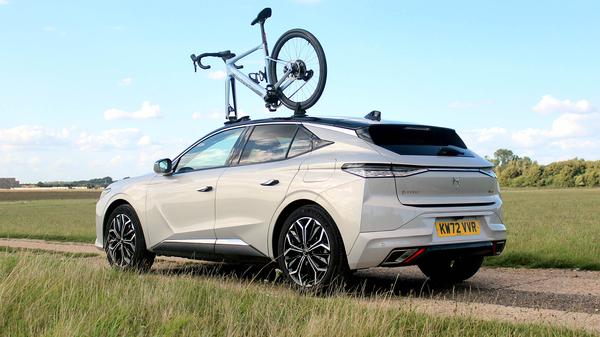
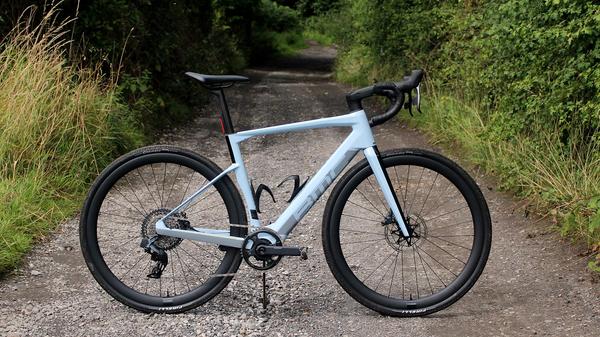
Month 6 – Au revoir
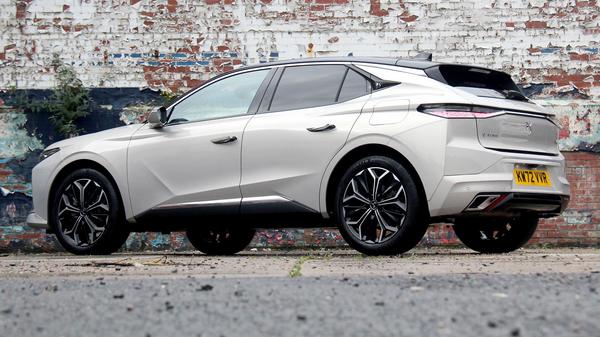
Mileage: 5,307
Fuel consumption: 53.1mpg (measured)
Having waved goodbye to the DS4 a couple of days ago I’ve committed to redressing what look like some slightly downbeat updates over the last few months. And finding some nice things to say, of which there are honestly plenty.
But I can’t ignore the elephant in the room, and fact this plug-in hybrid version just didn’t work for my particular driving patterns. That’s fine, as there are conventional petrol-engined options in the range and a fully electric one coming. For my needs this just seemed the worst of both worlds, though. For starters to make room for the battery the petrol tank is pretty small, so even with that brimmed and the hybrid system fully charged I couldn’t do my regular 400-mile round trip down south without stopping to top up. Which on a late night run back from Heathrow was, frankly, annoying. Nor was there enough electric only range to make the faff of charging it feel worthwhile, though this did improve from the 20 miles shown initially to nearer 30 when the weather got better. Even then three full charges between fill-ups – about a tenner on my domestic electricity tariff – only scored me a combined 60mpg, which is a long way off the claims of well over 200.
If you do shorter journeys the hybrid’s shortcomings might be less of an issue, and for a company driver the Benefit in Kind savings make it a no-brainer. But not for me.
So, to the good stuff! Even with the familiarity of a few months together I still admired the DS4’s looks, and the fact it stands out from the anonymous majority of other vehicles in its class. The whole DS schtick of fashion conscious Frenchness works, and it’s way more distinctive than the Vauxhall Astra and Peugeot 308 it shares roots with. The DS badge may still not have the brand recognition, but I think people understood it was something a bit posh and that feeling extended to the inside and the enduring tang of leather that endured despite the best efforts of the kids. And this on the mid-spec Rivoli, the top-level Opera models getting a rather more fancy sounding ‘watch strap’ brown Nappa leather with contrasting stitching.
It may not have had the long-distance cruising range but on those long, lonely trips up and down the M1 it was always super comfortable, with traditionally French ride comfort and excellent refinement that had me looking enviously at the fancy Focal stereo on the options list. Definitely a box I’d be ticking if I were buying a DS, especially one of the fancier ones with sound-deadening acoustic glass to really let you enjoy your tunes. While the standard suspension was also fine. I’d also like to try one with the fancy Active Scan system that supposedly self-adjusts in anticipation bumps before the wheels go over them.
While I never really got to grips with (or used) the squiggly additional touchpad I also appreciated the understated tech, the screen and menus big enough to be user friendly without dominating the interior or leading to after dark eye strain like some sort of home electronics showroom. But maybe I’m showing my age, here.
So, if not the most memorable or stand-out long-term test car I’ve run I appreciated the DS for its determination to do things its own way. In a market sector packed with clones or wannabes that counts for a lot, so I’ll sum up by saying vive la difference!
Back to top